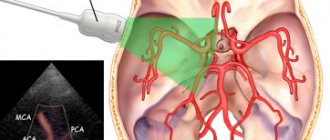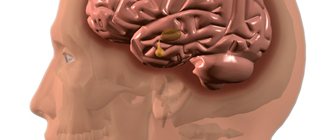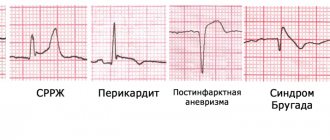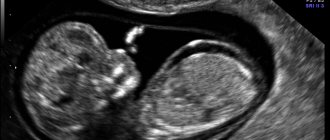The mechanism of shortness of breath in osteochondrosis
The spine consists of 32-33 vertebrae: 24 of them are mobile and form the cervical, thoracic and lumbar spine. All of them are connected in series by ligaments, facet joints and intervertebral discs.
Each vertebra has a body and an arch with spinous processes extending from it. Connecting together, they form the spinal canal. It contains the spinal cord, veins and arteries. Through the lateral transverse foramina of the vertebrae, blood vessels and nerve endings extending from the spinal cord exit the spinal canal. Located along the spine, they penetrate all tissues and organs of the body, ensuring their blood supply and proper functioning.
With osteochondrosis, intervertebral discs are destroyed: their height and elasticity decrease. This leads to increased load on the spine, displacement of its vertebrae towards the paravertebral structures and the formation of bone growths on them. When moving, they irritate the spinal roots and blood vessels: the flow of blood and oxygen to the tissues, the transmission of impulses from the spinal cord to the brain deteriorate.
If osteochondrosis is not treated, over time a protrusion or herniation of the intervertebral disc forms, joints, ligaments and muscles are involved in destructive processes, and pathological mobility of the vertebrae appears. This leads to compression of blood vessels and nerve roots: intense pain and disturbances in the functioning of internal organs occur. The nature of vascular and neurological disorders depends on the localization of pathological processes in the spine.
Overexertion and frequent stress
If a person does not get enough air during sleep, this may be a manifestation of recent stress or excessive physical exertion. It is known that psycho-emotional surges cause the release of adrenaline into the bloodstream, which leads to an increase in their volume. As a result, the organ begins to pump more air than in its normal mode.
In this state, a person at times cannot breathe normally, which negatively affects the health and functioning of the entire body. Additional symptoms, in addition to the patient having difficulty breathing, include:
- cold sweat during night rest;
- the muscles of the body are in increased tone, which causes a complete lack of sleep;
- a lump appears in the throat, similar to a spasm;
- the skin first turns pale, and then, due to lack of air, begins to turn blue.
This condition in which the patient has difficulty breathing due to insufficient air penetration is called hyperventilation.
Doctors say that this condition is not considered pathological, but the cause that caused this phenomenon must be cured, otherwise the disease will cause serious health problems.
Attention! If a person is sure that the attack that caused suffocation occurred due to severe stress or overexertion of the body, there is no need to visit a doctor, since the patient will not be prescribed treatment - it is enough for him to normalize his physical and mental state in order to get rid of the developed problem.
Why is it difficult to take a full breath with osteochondrosis?
Difficulty breathing can be a sign of both thoracic and cervical osteochondrosis.
If the discs are destroyed between 1-4 thoracic vertebrae, the phrenic nerve, the spinal roots responsible for the innervation of the organs of the respiratory, digestive and cardiovascular systems are infringed: pain appears during deep breathing, the functioning of the lungs, heart and stomach is disrupted.
With cervical osteochondrosis, pinching of the nerve roots also occurs. But the inability to take a full breath in the case of pathology of this part of the spine is explained by compression of the vertebral artery: through it blood flows to the posterior parts of the brain. A constant lack of oxygen and nutrients in the brain tissue causes inhibition of the respiratory center and the transmission of pathological impulses to the muscles of the diaphragm. The external manifestation of such processes is: shortness of breath and a feeling of lack of air, frequent but not deep breathing.
A chiropractor answers the question of why it is difficult to breathe with osteochondrosis.
Causes of lack of air when breathing
Lack of air haunts a person not only with pulmonary diseases: the causes of the feeling of lack of air can be acute allergies, such as Quincke's edema, diseases of the cardiovascular system and much more.
Cardiac dysfunctions
Disturbances in the functioning of the heart muscle provoke a lot of symptoms, one of which is difficulty breathing.
Anatomical defects
Difficulty breathing can be caused by disorders of the anatomical structure of the heart, for example, defects.
The following types of defects are distinguished:
- “blue type” defects - venous blood mixes with arterial blood, which leads to hypoxia;
- “white type” - the two types of blood do not mix.
Anatomical defects can be congenital, during the formation of the fetus in the womb, or acquired as a result of various diseases (ischemia, rheumatism, etc.)
Inflammatory diseases of the myocardium
Lack of air occurs with myocarditis - inflammation of the myocardium, which leads to damage to the heart tissue. As a result, heart failure develops, implying blood hypoxia. As a result, it becomes difficult for a person to breathe, stabbing pain occurs at rest, swelling of the limbs, dizziness and fainting are possible.
Heart failure
Heart failure is the most common cause of difficulty breathing. The blood intercepts oxygen and transports it to the cells, and its insufficient volume leads to the accumulation of fluid in the lung tissue, and, consequently, pulmonary edema. This condition leads to shortness of breath.
Most people with heart failure complain of heavy breathing when lying down—orthopnea—which requires them to sleep in a sitting position. A strong feeling of lack of air is observed with paroxysmal shortness of breath during sleep, which forces a person to wake up.
Angina pectoris
Heavy breathing during coronary artery disease and angina pectoris is one of the main symptoms of impaired blood supply to the myocardium. In this case, the patient cannot take a deep breath and severe shortness of breath occurs. The situation is complicated by chest pain, which is relieved by taking nitroglycerin. If such symptoms occur, you should consult a doctor promptly.
Arrhythmias of various types and severity
The cause of lack of air is often hypertension. Increased pressure leads to increased stress on the heart muscle, which leads to its dysfunction. A sharp decrease in blood pressure often leads to compensation, that is, an increase in heart rate. The heart works more intensely, which also leads to the inability to take a deep breath.
Cardiomyopathies and dystrophic processes
Cardiomyopathies involve damage to the heart muscle, the occurrence of arrhythmia and heart failure. This disease can occur as a result of other diseases, such as coronary artery disease, tumors, hypertension. One of the most striking symptoms of cardiomyopathy is the occurrence of shortness of breath when walking and at rest.
Dilated cardiomyopathy leads to orthopnea - lack of air in a horizontal position.
Heart attack
A heart attack is a disease accompanied by partial necrosis of the heart muscle. Chest pain occurs suddenly and is not relieved by taking nitroglycerin, making it difficult for a person to breathe. Dyspnea occurs suddenly and is often not associated with physical activity. Heavy breathing can accompany a person who has already suffered a heart attack.
Lung pathologies
Difficulty breathing is one of the most common symptoms of pathologies of the respiratory system, in particular mild ones.
Chronic obstructive disease (COPD)
In the case of COPD, a person first becomes short of breath during physical activity, and then shortness of breath occurs at rest. In this disease, air flow is permanently limited due to chronic obstruction (narrowing) of the airways. A person with COPD may find it difficult to breathe initially after exercise, but symptoms will worsen over time. Complete treatment is impossible, but timely contact with a specialist can significantly mitigate the symptoms of the disease.
Pulmonary embolism
Pulmonary embolism is a blockage of the pulmonary arteries by a blood clot. This often occurs in the lower extremities, but thromboembolism can occur in the vessels of any part of the body. Blockage of the pulmonary artery leads to impaired oxygen transport and heavy breathing. The disease most often occurs in adults and is life-threatening.
Air entering the chest - pneumothorax
Air enters the chest due to severe injuries. Oxygen enters the pleural cavity, which leads to compression of the lung. As a result of these processes, gas exchange is disrupted: a feeling of lack of air occurs.
Tumors
Difficulty inhaling or exhaling can be caused by lung cancer. Dyspnea in cancer may be caused by airway spasm, collapse, infection, accumulation of pericardial or pleural fluid, or superior vena cava syndrome.
Pneumonia
Shortness of breath with pneumonia can have varying degrees of severity depending on the severity of the disease. Shortness of breath is most severe in the presence of infection and inflammation of the respiratory system.
Bronchitis
A feeling of shortness of breath may indicate obstructive bronchitis. This disease involves obstruction of the airways, which leads to inhalation problems.
Asthma
One of the most common causes of shortness of breath is asthma. A person with asthma often experiences expiratory shortness of breath—difficulty in exhaling. Severe cases of asthma involve the presence of inspiratory dyspnea.
Pressure
Increased blood pressure leads in particular to symptoms such as tachycardia and shortness of breath. A person suffering from hypertension thinks, “I’m suffocating,” and increasing panic leads to a worsening of the situation. Therefore, in such a situation, you should calm the person down and call an ambulance.
Blood diseases
Respiratory disorders are observed with blood diseases such as anemia and leukemia. The level of red blood cells and hemoglobin decreases, which leads to a decrease in oxygen transport. As a result, hypoxia of organs and tissues is observed.
Brain disorders
Hyperventilation syndrome is a psychoneurological pathology in which a person is afraid of suffocating and inhales more air. As a result, a peculiar respiratory rhythm is formed, increasing ventilation of the lungs. Most often this is associated with neuroses and panic attacks.
Psycho-emotional states
In a state of extreme mental shock or fear, a person often feels a lack of oxygen. This is a variant of the norm. A person also suffocates with increased nervous excitability.
Features of the manifestation of shortness of breath
With cervical osteochondrosis, a feeling of incomplete inspiration and shortness of breath occur both at rest and with little physical activity, both during the day and at night. During sleep, lack of air manifests itself in the form of snoring and short-term cessation of breathing. The patient's sleep becomes interrupted. In the morning he wakes up tired and overwhelmed.
The problem usually develops slowly: mild shortness of breath gradually turns into persistent attacks of suffocation, accompanied by a panic attack. The feeling that it is difficult to take a deep breath can be provoked by: an awkward and sharp turn of the head, sneezing.
With thoracic osteochondrosis, it is difficult to take a deep breath due to pain between the shoulder blades. When the intercostal nerve is pinched while inhaling, shooting pain occurs in the area of the ribs. Their intensity increases with walking, bending, turning the body, rotating the arms, sneezing and coughing. Due to severe pain when the intercostal muscles are tense, breathing becomes frequent, but superficial.
30% discount for 60 minutes!!!
How you can help yourself learn to breathe again
Having read medical sites about severe pulmonary pathologies, the patient finds it difficult to think adequately. But if you understand that the main cause of respiratory disorders is stress, then you can quickly eliminate the symptom. There are usually only two main problems here.
| Problem | What's happening? | How can we help? |
| Hyperventilation of the lungs | A scheme familiar to all VSDs and alarmists is triggered: a surge of adrenaline - increased panic - a set of most unpleasant sensations. But not all nervous people realize that in moments of stress it is difficult for them to take a full breath, not because everything is tight in their chest, or their lungs refuse to work, but because there is more than enough oxygen inside. The rapid, shallow breathing that occurs during panic disrupts the correct proportion of oxygen and carbon dioxide in the bloodstream. And, trying to swallow even more air, a person may simply lose consciousness - as a result of which, by the way, he will not die at all, but will restore respiratory function and throw out “extra” oxygen. | These simple exercises have saved many VSD sufferers who are in a panic attack:
|
| Respiratory neurosis | People with nervous disorders tend to obsess over their symptoms. So, if hyperventilation happened for the first time, or was brighter than previous ones, a person may be so frightened by it that he becomes fixated. He will constantly begin to test himself for “correct breathing”, try to check whether it is difficult to take a deep breath or not, whether anything is interfering with the process. Therefore, respiratory neurosis can be called a kind of “complication” of hyperventilation or a panic attack. In a neurotic person, the subconscious will note any changes in breathing, take the imaginary for reality, leading the person to depression. | It all depends on how ready you are to change your attitude towards the problem. You need to understand: you will not die from lack of air. Even if you overinhale and lose consciousness, when you come to your senses, you will already receive restored breathing. It is a pity that not all patients have enough willpower to begin to change their thoughts. Then a psychotherapist will come to the rescue. In some cases, conversations alone are not enough, and medications are involved. Because neuroses are not a simple thing at all, and often the patient is not able to cope with them on his own. |
USEFUL INFORMATION: Why you feel hungry in the evening
Respiratory problems are psychologically difficult. Everything that the human brain automatically perceives as a threat to life is experienced especially painfully, first of all, from the moral side. But the only advantage of nervous breathing difficulties is that they will never lead to death, because their cause is not organic. And this small, but such an important plus can adjust your mind to an adequate perception of the situation and help solve the problem.
Associated symptoms
Respiratory disorders appear as osteochondrosis progresses and are accompanied by other symptoms.
Signs of pathology of the cervical spine:
- Headache;
- Dizziness;
- Fainting;
- Tachycardia;
- Impaired coordination of movements;
- Pain, crunching when bending the neck;
- Deterioration of hearing and vision;
- Numbness, tingling of fingers;
- Increased drowsiness;
- Blueness of the fingertips and skin around the lips.
Another possible symptom of cervical osteochondrosis is frequent yawning: this is the body’s reaction to a lack of oxygen in the brain tissue.
You can suspect the presence of thoracic osteochondrosis based on the following signs:
- Stiffness of movements in the thoracic region;
- Reducing the amount of side bending;
- Pain, sensation of a lump in the throat and a foreign body in the lungs;
- Pain in the heart area;
- Decreased ability to work.
With osteochondrosis, the feeling of a foreign body in the respiratory tract forces the patient to cough when taking a deep breath. In the early stages of osteochondrosis development, the cough is dry and paroxysmal. As pathological processes progress, it becomes wet. The appearance of hoarseness in the voice and cardialgia syndrome are noted.
What are the reasons for the development of pathology
Various diseases can lead to the development of respiratory failure. Often, pathology develops during sleep, since at this time all organs work in a weaker and “saving” mode. Therefore, if the patient has serious health problems, it is difficult for the body to activate its protective properties during sleep, which causes respiratory failure.
The main reasons leading to the development of this condition include:
- nocturnal dyspnea of paroxysmal type;
- heart asthma;
- bronchial asthma;
- excess weight;
- arrhythmia;
- apnea;
- panic attack, which is often observed in the patient during life.
Each cause must be treated according to a specially developed scheme. If you are overweight, you need to go on a diet; if you have asthma, you should take medications, and to combat panic attacks, it is recommended to visit a psychologist.
How to check the functioning of the respiratory system
To check the condition of the lungs and exclude their pathology, there are several tests:
- "Stange's test." We squat, take a deep breath and exhale, hold our breath for 40 seconds (if possible).
- We light a candle, move away from it at a distance of 70-80 cm, and inhale. As we exhale, we try to blow out the fire.
- We perform several squats, go down and immediately go up the stairs.
- We inhale as deeply as possible and try to inflate the balloon with one exhalation.
If, when performing tests, a cough appears, pain in the chest or spine, the feeling of lack of air intensifies, and it is difficult to take a full breath, this indicates the presence of lung dysfunction. To make an accurate diagnosis, you must consult a doctor.
First aid for shortness of breath
To eliminate shortness of breath and the feeling of incomplete inspiration during osteochondrosis, you can do the following:
- Clear the airways, open the windows for fresh air.
- Go outside.
- Carry out inhalation based on essential oils of eucalyptus, mint or citrus fruits, potato decoction or onion peels.
- Make a foot bath with infusions of medicinal herbs or mustard powder.
- Use an inhaler, take medications for asthmatics (allowed as a last resort and only after prior consultation with a doctor).
All these measures help restore the rhythm and depth of breathing, but they only temporarily alleviate the symptoms of osteochondrosis. To completely get rid of shortness of breath and restore the ability to take a deep breath, you need to comprehensively treat the spine.
If the feeling of lack of air due to osteochondrosis cannot be relieved at home, you need to call an ambulance!
Diagnostics
The clinical manifestations of thoracic and cervical osteochondrosis resemble diseases of the heart, blood vessels and lungs, and brain pathologies. To correctly determine the reason why it is difficult to take a full breath, differential diagnosis must be carried out. First they prescribe:
- Blood analysis;
- Fluorography;
- Ultrasound of the heart muscle;
- Electroencephalography;
- Electrocardiogram.
If during these diagnostic procedures pathologies of internal organs and the brain are not detected, a comprehensive examination of the thoracic and cervical spine is recommended.
| Method for diagnosing osteochondrosis | Research results confirming the relationship between the sensation of incomplete inspiration and spinal pathology |
| Radiography | Displacement of the vertebrae, the presence of bone growths on them |
| Reducing the height of intervertebral discs | |
| Wedge-shaped narrowing of the gap between the thoracic vertebrae | |
| CT or MRI | Compression of nerve endings, blood vessels in the cervical or thoracic region by osteophytes, a destroyed disc or hernia |
| Vertebral instability | |
| Myelography | Compression of roots, vessels, membrane of the spinal cord |
If necessary, an additional neurological examination is performed. It helps to localize and assess the degree of motor and sensory disorders.
How to treat effectively
We invite you to pay attention to a useful course that has helped a huge number of people suffering from thoracic osteochondrosis improve their quality of life.
The author of the course is an experienced doctor (for more information, click on the link below), who has been preparing proper nutrition for osteochondrosis for almost 10 years, thinking through sets of exercises and sharing this with people. Hundreds of people experienced the effect of her courses and were grateful. Try it too, all the details are in the link below. And since we are partners, we offer a special coupon SALE30 , which gives a 30% discount when ordering a course!
Get tips for treating osteochondrosis at home!
Methods for treating shortness of breath in osteochondrosis
When the cause of insufficient inhalation is osteochondrosis, therapy should be aimed at reducing compression of the nerve roots and vessels of the thoracic or cervical spine. Drug and non-drug treatment is prescribed.
Drug therapy
The use of medications is recommended in the acute period of osteochondrosis. Drug therapy helps:
- Relieve symptoms of the disease;
- Normalize breathing;
- Accelerate the flow of blood and oxygen to the brain tissues and internal organs;
- Slow down the progression of degenerative processes in the spine.
Drug treatment of shortness of breath in osteochondrosis involves the use of drugs for local use, oral or intramuscular administration.
| A group of drugs prescribed for the treatment of difficulty breathing in osteochondrosis | Tradename | Properties |
| Muscle relaxants | Mydocalm | Relieve muscle spasms |
| Baclofen | ||
| Tolperisone | ||
| Improves blood circulation | Piracetam | I relieve pain and normalize the flow of oxygenated blood to the chest organs and brain |
| Thiocetam | ||
| Chondroprotectors | Chondroxide | Restore cartilage tissue and prevent its further destruction |
| Glucosamine | ||
| Nonsteroidal anti-inflammatory drugs | Diclofenac | Reduce tissue swelling, relieve inflammation, help reduce pain |
| Nimesulide | ||
| Meloxicam | ||
| Neuroprotectors | Cerebrolysin | Improve metabolism and blood circulation in the brain, increase the resistance of its tissues to hypoxia |
| Actovegin |
In case of severe respiratory disorders, therapy can be supplemented with antiasthmatic drugs. The relief of asthma attacks is carried out with blockades with adrenaline.
Non-drug treatment
Non-drug therapy for difficulty breathing in osteochondrosis is prescribed after the main symptoms of the disease have been relieved. It includes:
- Physiotherapeutic procedures (magnetic therapy, phonophoresis) - help reduce pressure on the roots and blood vessels, normalize muscle tone;
- Therapeutic gymnastics – relieves static tension in the spine, accelerates blood circulation, cleanses and clears the airways, improves lung ventilation;
- Massage – relaxes muscles and restores their trophism, stimulates the flow of nutrients to the bone and cartilage tissues of the spine.
One of the most effective auxiliary methods for treating difficulty breathing in osteochondrosis is physical therapy. Exercises aimed at working the muscles of the neck, thoracic region and shoulder girdle have a good effect:
- As you inhale, slowly turn your head to the right, then to the left. As you exhale, rest your chin on your chest. Repeat 5-10 times.
- Let's become. We keep our legs together, our arms along the body. Inhaling, we raise our upper limbs, and exhaling, we bend back. We lower our arms, lean forward (as we inhale), round our back and lower our shoulders and head (as we exhale). We do the exercise up to 10 times.
- We throw our heads back and look at the ceiling. Slowly tilt it to the side, trying to touch your ear to your shoulder. Repeat 5-8 times.
- We sit on a chair with a back and lean on it. We bend back and hold for a few seconds. We lean forward and return to the starting position. We do this 5 times.
You need to perform the exercises smoothly and slowly, observing the rhythm of your breathing. If during exercise it becomes difficult to take a full breath, shortness of breath or chest pain or dizziness occurs, you should consult a doctor.
Treatment of difficulty breathing
Medicines
Treatment of shortness of breath is selected individually for each case. If the problem is difficulty in removing sputum, thinning agents are selected. For ischemic heart disease, drugs to increase coronary blood flow are prescribed; for hematogenous dyspnea, anemia should be eliminated. Psychotherapy courses are prescribed to people whose shortness of breath is caused by a psychogenic factor.
General recommendations
To prevent shortness of breath, follow these rules:
- give up bad habits, especially smoking;
- normalize physical activity;
- stick to a normal daily routine;
- do breathing exercises;
- Allergy sufferers should avoid contact with allergens.
These rules will help you maintain a healthy respiratory system and prevent shortness of breath.








